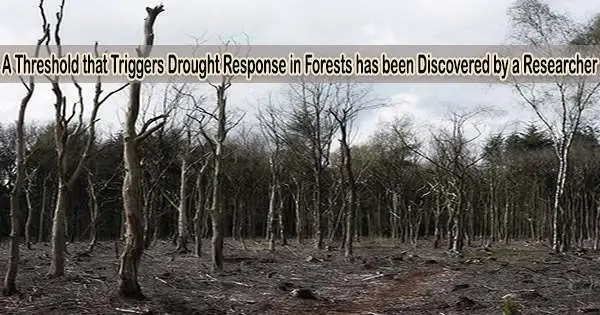Missouri has a diverse range of natural resources, with forests being one of the most valued ecosystems in the state. As global warming causes warmer temperatures, forests are under pressure to adapt to these changes and ensure their survival in a warmer world.
In a new study, University of Missouri researcher Jeffrey Wood introduces the “ecosystem wilting point” concept, which explains how whole forests respond to drought. Wood and his colleagues discovered that when forests reach their ecosystem wilting point, they lose their ability to operate effectively, including the ability to absorb carbon dioxide.
Wood used observations of evapotranspiration (the loss of water to the air) and ecosystem water status, which reveals how hydrated the forest is, to learn how it responded during droughts.
“The motivating reason for being able to understand the drought response of forests is that, globally, drought is important now, and it’s not expected to get better,” said Wood, an assistant professor in the College of Agriculture, Food and Natural Resources. “We wanted to develop a better way to understand and characterize these ecosystems, so we can use that information to help with modeling the dynamics of vegetation over time and better understand the future impact on these ecosystems.”
The ecosystem wilting point is functionally significant in that when the forest passes that threshold, there is a noticeable change in how the forest is behaving. When you get into that highly stressed state, the forest is quite unresponsive to changes in the environment. So, when the sun comes up, you would tend to think that the forest turns on and starts to photosynthesize, but if the forest is past its ecosystem wilting point, it has a very limited capacity to respond to the changes in light in terms of carbon dioxide uptake because it’s under so much stress.
Professor Jeffrey Wood
In pursuit of understanding the nuances of forests’ stress, Wood and his co-authors reanalyzed data collected during an extreme drought event that took place in 2012 in Baskett Forest, an outdoor laboratory of 2,266 acres located five miles east of Ashland, Missouri.
This study employs a method that was originally created to investigate the interaction between water and a single cell. That method was later applied to leaves, and in this study, Wood extended it to analyze an entire forest.
This oak-hickory forest in central Missouri reaches its ecosystem wilting point after 2-4 weeks of extreme drought, according to this study. At that point, the forest would need soaking rainfall to rejuvenate.
“The ecosystem wilting point is functionally significant in that when the forest passes that threshold, there is a noticeable change in how the forest is behaving,” Wood said. “When you get into that highly stressed state, the forest is quite unresponsive to changes in the environment. So, when the sun comes up, you would tend to think that the forest turns on and starts to photosynthesize, but if the forest is past its ecosystem wilting point, it has a very limited capacity to respond to the changes in light in terms of carbon dioxide uptake because it’s under so much stress.”
This work provides insight into the water relations of entire forests, which is a significant tool for researchers investigating how forests around the world handle temperature differences, which Wood notes is crucial as scientists manage forests to better survive climate change.
“Forests are pretty important; they’re connected to weather and the climate in ways that we still don’t fully understand,” Wood said.





